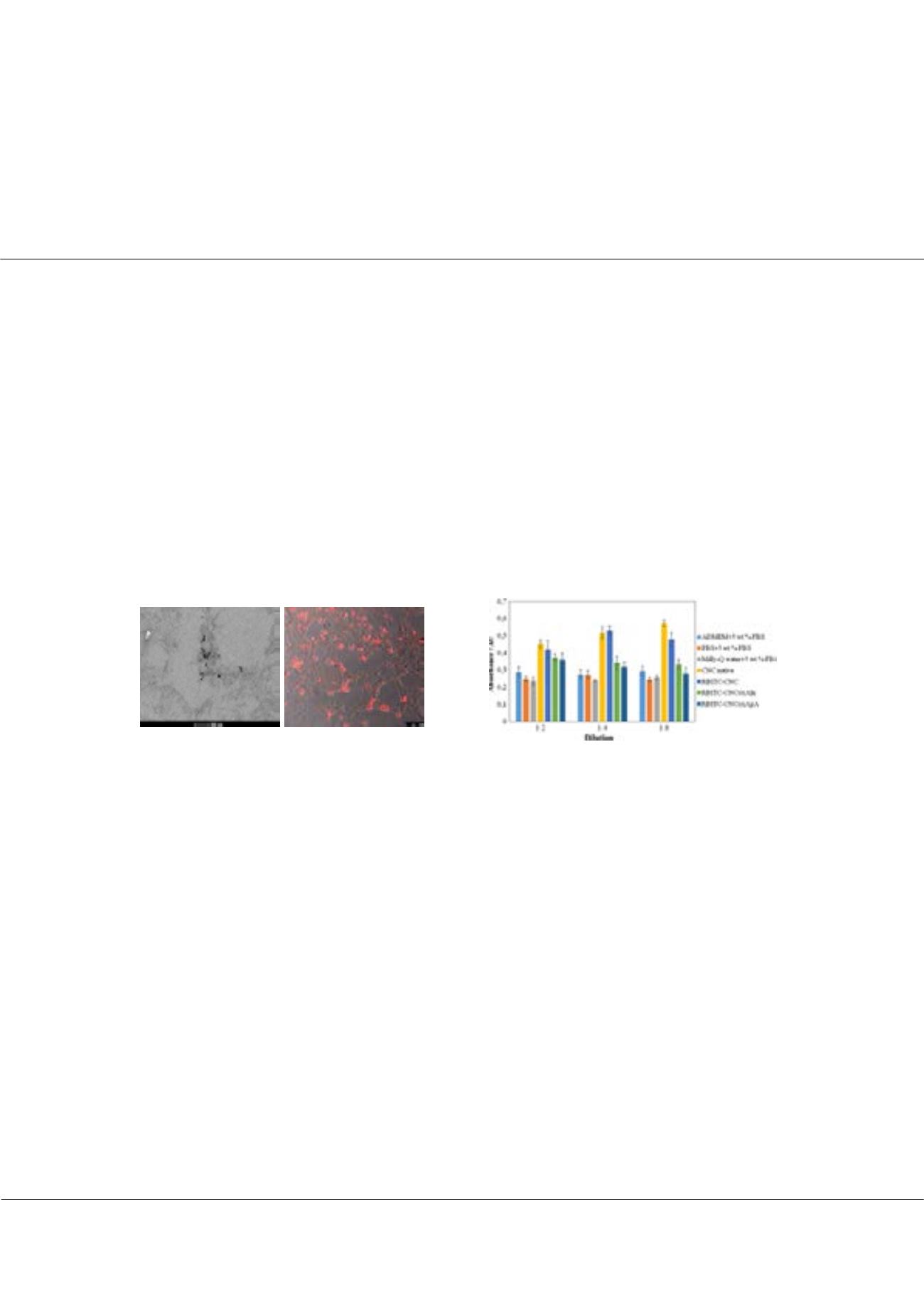

Page 105
conferenceseries
.com
Volume 8
Journal of Biotechnology and Biomaterials
ISSN: 2155-952X
Biomaterials 2018
March 05-06, 2018
March 05-06, 2018 | Berlin, Germany
3
rd
Annual Conference and Expo on
Biomaterials
Cytocompatibility and immunomodulatory properties of nanocellulose for bone-tissue regeneration
Vanja Kokol
1
, Sergej Tomić
2
, Miodrag Čolić
2
, Selestina Gorgieva
1
, Uroš Maver
1
and
Lenart Girandon
3
1
University of Maribor, Slovenia
2
University of Defence, Serbia
3
Educell Ltd., Slovenia
N
anocellulose (NC) has gained much attention recently for their use in pharmaceutical and biomedical applications (such
as wound healing, tissue engineering, cell therapy, gene and drug delivery, and diagnostics) due to its large surface area,
special mechanical characteristics, and generally-believed excellent biological properties. Out of the two main types of plant-
based nanocellulose materials (cellulose nanocrystals (CNCs) and cellulose nanofibrills (CNFs), only CNFs possess a relatively
low rigidity, thanks to the alternating crystalline (contributing to stiffness and elasticity) and amorphous cellulose structure
(contributing to flexibility and plasticity), which significantly widens their biomedical applications. However, as the commercial
applications of NC are approaching, the question about their safety and biocompatibility is also on rise. In contribution, the
cytotoxicity as a key parameter of biocompatibility of CNF/CNCs will be presented and discussed depending on its structural
properties (size, shape, assembling), surface chemistry, applied concentrations, study models, cell types and exposure time. The
effect of NC labeling, being required to perform all the analysis, will be also taken into account. In addition, some studies on
immunological mechanism of CNFs’ anti-inflammatory effects will be shown.
TE and confocal microscopy images of RBITC-labelled native (1st line), and ApA modified (2nd line) CNCs after 1h of
incubation with human osteoblasts.
MTT testing results (the absorbance intensity of formazan product measured at 570 nm) of osteoblasts incubated with
differently diluted 0.5 wt% of CNCs.
Recent Publications
1. Gorgieva Selestina, Girandon Lenart and Kokol Vanja (2017) Mineralization potential of cellulose-nanofibrils
reinforced gelatine scaffolds for promoted calcium deposition by mesenchymal stem cells. Mater Sci & Eng C,
Materials for Biological Applications 73:478-489.
2. Gorgieva Selestina, Vivod Vera, Maver Uroš, Gradišnik Lidija and Dolenšek Jurij (2017) Internalization of (bis)
phosphonate-modified cellulose nanocrystals by human osteoblast cells. Cellulose 24(10):4235-4252.
3. Tomić Sergej, Kokol Vanja, Mihajlović Dušan, Mirčić Aleksandar and Čolić Miodrag (2016) Native cellulose
nanofibrills induce immune tolerance
in vitro
by acting on dendritic cells. Scientific Reports 6:1-14.
4. Gorgieva Selestina, Vogrinčič Robert and Kokol Vanja (2015) Polydispersity and assembling phenomena of native and
reactive dye-labelled nanocellulose. Cellulose 22(6):3541-3558.
5. Čolić Miodrag, Mihajlović Dušan, Mathew Aji P, Naseri Narges and Kokol Vanja (2015) Cytocompatibility and
immunomodulatory properties of wood based nanofibrillated cellulose. Cellulose 22(1):763-778.
Vanja Kokol et al., J Biotechnol Biomater 2018, Volume 8
DOI: 10.4172/2155-952X-C1-089
















